Camp Of Instruction ARMY UNIT FORT RILEY KANSAS National Guard PHOTO FT KS 1908
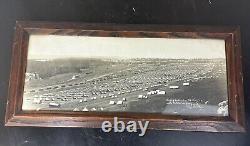
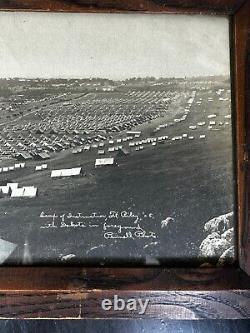
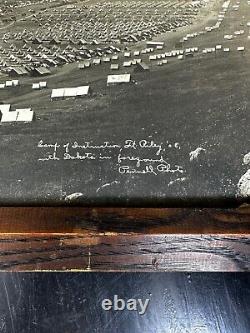
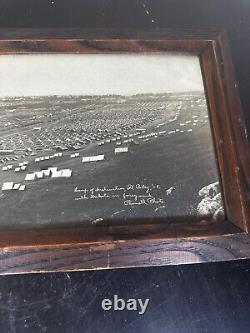
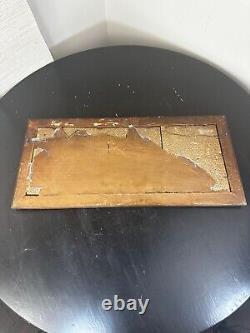
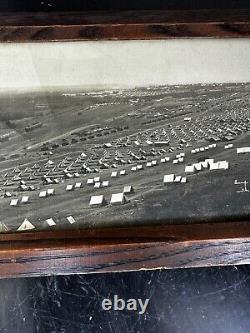
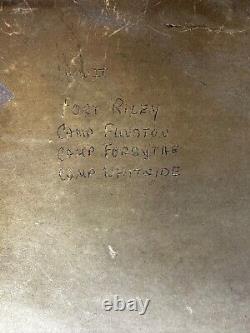
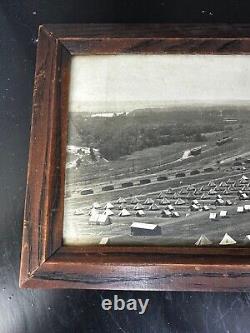
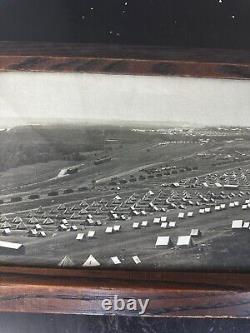
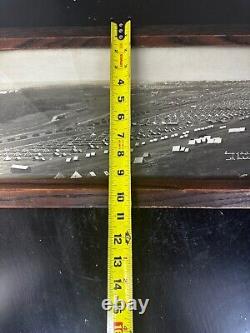
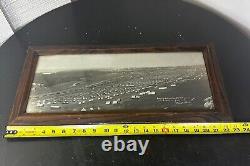

Panoramic silver gelatin photograph, light surface wear. Mounted on original brown cardboard, as usual for the Pennell studio. A fine photograph depicting the training camp for the Kansas National Guard at Fort Riley, Kansas in 1908. The photograph shows a tent city ranged along the grassy flatlands near the Kansas River at Fort Riley.
Hundreds of tents are shown on the prairie, with soldiers discernible as well. A railroad line runs between the river and the camp, and a small town can be seen in the far distance. The image was shot by local professional studio photographer Joseph Judd Pennell. Typical of Pennell's photographs, the image is well- composed, tonally-balanced, and crisply printed.
Joseph Judd Pennell was a prolific, accomplished, and successful studio photographer operating in Junction City, Kansas from 1893 until 1922. Over the course of his career, Pennell shot hundreds of photographs and the prints and photographic plates he left behind constitute a vital record of Junction City, Fort Riley, and the surrounding areas. He photographed the town of Junction City in great detail, along with portraits of the residents (men, women, and children from diverse ethnic backgrounds), businesspeople (from attorneys to blacksmiths to tailors), businesses (both exteriors and interiors), vehicles, roads, farms and large farm equipment, railroads (including the nearby Union Pacific), and much more. Pennell recorded the life of Fort Riley in similar detail, photographing the grounds of the camp, camp life, barracks, maneuvers, the soldiers themselves, the regimental band, and shots of the training classes taken by the mounted service school (one such photograph depicts a tented classroom where a couple dozen students dissect a horse), among others.
During Pennell's career, Fort Riley was a vital component of life around Junction City, where about 1,000 soldiers were stationed and often visited Junction City for mostly recreational reasons. The focus of Fort Riley itself was advanced cavalry and artillery training for both officers and enlisted men. It was also, obviously, a training location for the Kansas Army National Guard, as evidenced in the present photograph.Pennell often produced the images of Fort Riley to sell to soldiers as mementos of their time in northeast Kansas. The photographs Pennell made seem to be the product of a transcendent, disembodied eye that silently traversed Junction City, chronicling the town's triumphs and defeats, with little trace of its own presence. Depicting objects and images dispersed throughout the town and beyond, they created a bond within the community and gave physical form to assumptions held by many of its citizens, investing their world with a level of detailed information and a three- dimensional solidity that has come to be synonymous with it - Shortridge. A rare photograph (as Pennell images seem to be across the board) mounted on the studio's original cardboard.
This particular photograph does not appear in OCLC; two similar images are recorded (one of Fort Riley dated 1908 with "Dakota in foreground" and a 1913 panorama of the Fort Riley training ground featuring the Kansas National Guard), both at the University of Kansas (which holds a substantial archive of Pennell's work). The University of Kansas, however, does not appear to hold this image. Shortridge, OUR TOWN ON THE PLAINS: J. : University Press of Kansas, [2000].
